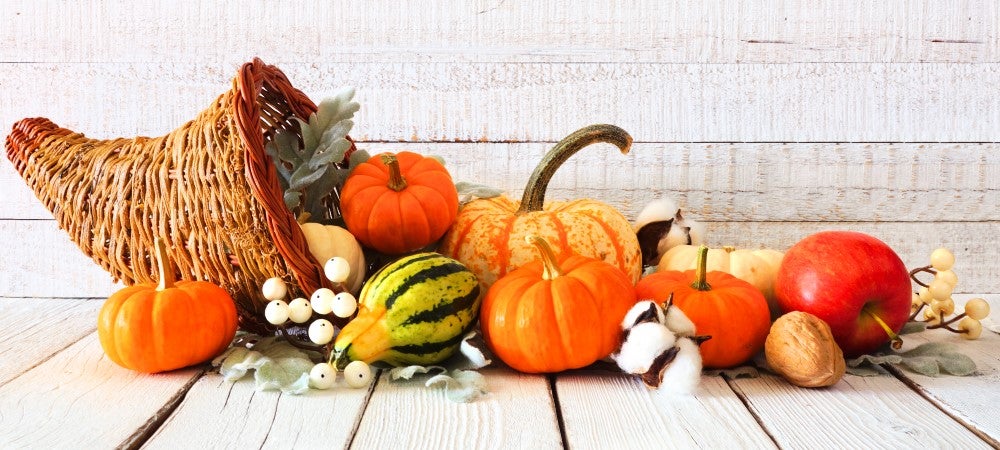Even with everything that’s gone on this year, it’s still important to be grateful for the things we have – especially our families and our health. Thanksgiving is a holiday just for that purpose, so it’s understandable people will be eager to celebrate this year.
Unfortunately, with the COVID-19 pandemic still raging in many parts of the country, the ways we celebrate this year may need to be a little different. Thankfully, the Centers for Disease Control and Prevention has offered some suggestions for making this Thanksgiving and all our holiday get-togethers a little safer this season.
Assess the risks
When planning to host a holiday celebration, be sure to assess current COVID-19 levels in your community to determine whether to postpone, cancel, or limit the number of attendees. A higher number of COVID-19 cases in your community or the communities from which guests are coming increases the risk of infection and spread among attendees. Your local health department is the best source for up-to-date case information.
Know your people
Do not host or participate in any in-person festivities if you or anyone in your household has COVID-19 symptoms, is waiting for COVID-19 test results, has been diagnosed with COVID-19 and has not met the criteria for when it’s safe to be around others, may have been exposed to someone with COVID-19 in the last 14 days, or is at increased risk of severe illness from COVID-19.
Go virtual
It may lack the warmth of a traditional holiday event, but virtual gatherings are the safest possible get-togethers this year. Celebrating virtually or with members of your own household poses the lowest risk of getting or spreading the virus, and, thanks to technology, there are plenty of creative ways to do it.
Keep it local
Traveling increases the chance of getting and spreading COVID-19. So if you do decide to have a gathering, limit it to guests in the local area where you know the health department case data and the current spread level. Staying close to home is the best way to protect yourself and those you know.
Keep it small
It’s common sense, but gatherings with fewer people pose less risk. So if you can, keep your holiday gatherings small so you can limit contact, remain socially distant, and reduce the risk of spread among guests. Your local community also may have rules and regulations in place that limit the size of social gatherings. Be sure to keep your event within those limits.
Take it outside
It’s harder to do as the weather turns colder, but try hosting outdoor activities as much as possible since they pose significantly less risk of spreading the virus. If an outdoor event isn’t possible, try to avoid crowded, poorly ventilated, or fully enclosed indoor spaces. You can increase ventilation by opening windows and doors to the extent that it’s safe and feasible.
Make it quick
Gatherings that last longer pose more risk than shorter gatherings, so try to limit the length of your get-togethers. Most people will be happy to have a short gathering as opposed to none at all.
Wear masks
Wear a mask at all times, especially if you’re around people who don’t live in your household. It’s one of the best ways to reduce the risk of spreading the virus. You should also avoid singing or shouting, especially when you’re not wearing a mask and are in close contact with other people.
Keep your distance
Maintain a distance of at least 6 feet from people you don’t live with. Be particularly mindful in areas where it may be harder to keep that distance, like restrooms and eating areas. Also, avoid shaking hands or giving hugs when greeting others, even if that’s hard to do with close family and friends. Waves and verbal greetings are much safer at this point.
Don’t touch
As much as possible, keep commonly touched surfaces and any shared items clean and disinfected. It’s also a good idea to make as many things touchless as you can, like garbage cans and other devices.
Wash your hands
Wash your hands often with soap and water for at least 20 seconds, especially after you’ve been in a public place, or after blowing your nose, coughing, or sneezing. If soap and water aren’t readily available, use a hand sanitizer that contains at least 60% alcohol. Encourage others to wash up, too.
Don’t share
When it comes to serving food and eating this Thanksgiving, try to use single-use or disposable options. You might also want to identify one person to serve sharable items, like salad dressings, food containers, plates and utensils, and condiments. If you choose to use reusable items (e.g., plates, utensils, tablecloths, linen napkins, etc.), be sure to wash and disinfect them after the event.
Bring your own
If you want to make eating and drinking even safer, have everyone bring their own. Instead of serving Thanksgiving dinner potluck-style, encourage guests to bring food and drinks they like for themselves and members of their own household. It will keep everyone safer and save prep and cleanup time, too.
Keep your traditions
Most families have Thanksgiving traditions. It’s one of the things that make this holiday and all holidays special. But if you can’t keep them as a group this year, try keeping them as individual households. Make your traditional holiday meal at home using family recipes. Have a virtual dinner with other households in your family. Shop online together rather than in person the day after Thanksgiving. Watch the sporting events, parades, and movies your family enjoys from home. It won’t be the same as being together, but you’ll still feel connected.
There’s no doubt this Thanksgiving and this holiday season will be unlike any other. But with some reasonable modifications, we can all enjoy the holidays while keeping each other safe and healthy. From all of us at Mount Carmel to all of you, have a safe, healthy, memorable holiday season wherever you are and however you decide to celebrate.

